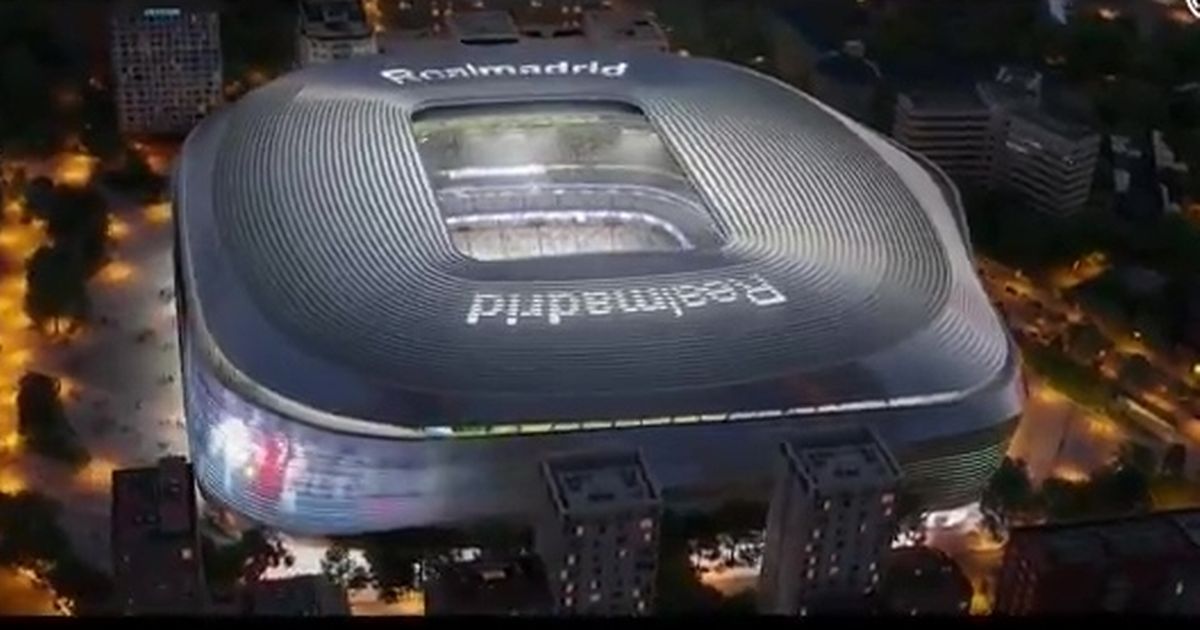Real Madrid stadium 2024 – here is how the new Real Madrid home stadium Santiago Bernabeu looks like 2024!
Real Madrid stadium new 2024? Which is Real Madrid’s home stadium? Santiago-Bernabeu Stadium has been the home stadium of Real Madrid since its completion in 1947. With a seating capacity of 81,044. Watch & Bet on Football =>
Santiago-Bernabeu Stadium is the second-largest stadium in Spain and third-largest in Europe and one of the largest football stadiums in the world in capacity.
Real Madrid stadium glory
This stadium hosted the four Champions League finals (1957, 1969, 1980, 2010). It also hosted the second leg of the Copa Libertadores Finals 2018, making Santiago Bernabéu the first and only stadium to host the two most important premier continental cup finals.
The European Nations Cup 1964 was also held in this stadium. Bernabeu hosted FIFA World Cup 1982 final. They became the first stadium in Europe to host both a UEFA Euro final and FIFA WC final. Watch & Bet on Football =>
Real Madrid stadium history
Architects Manuel Muñoz Monasterio and Luis Alemany Soler started the construction on 27 October 1944. It was inaugurated on 14 December 1947 with a match between Real Madrid and the Portuguese club Os Belenenses. The stadium had an initial capacity of 75,145 spectators, 47,500 of which had standing fans. Sabino Barinaga was the first player to score in the new stadium. Watch & Bet on Football =>
Real Madrid stadium name
| Full name | Santiago Bernabéu Stadium |
|---|---|
| Former names | Estadio Real Madrid Club de Fútbol (1947–1955) |
Real Madrid stadium capacity
| Capacity | 81.044 esp. |
|---|---|
| Record attendance | 129,690 (Real Madrid v. Milan, 19 April 1956) |
Real Madrid stadium architect
The architects of new stadium of Real Madrid are Manuel Muñoz Monasterio Luis Alemany Soler Antonio Lamela (Expansion). Watch & Bet Football Here =>
Real Madrid new stadium design

Real Madrid stadium plans
When Florentino Pérez became the president of the club, he took the initiative to improve the comfort of the Santiago Bernabéu and the quality of its facilities.
He invested €127 million in five years (2001–2006) and gave an expansion to the stadium with new boxes and VIP areas, new dressing rooms, a new press area, new bars, panoramic lifts, and so on.
The capacity of the Santiago Bernabéu was expanded to 80,354, all seated. It’s 1000th match was played in 2007 and UEFA decided to give the Santiago Bernabéu elite stadium status, a month before the celebration of the 60th anniversary of the inauguration of the stadium. In 2011, around 1,000 seats were added and it brought the stadium to its current capacity, 81,044. In 2017, Real Madrid and Microsoft launched the first interactive audioguide for the Bernabéu Tour.
Real Madrid stadium cost
| Built | 1944–1947 |
|---|---|
| Opened | 14 December 1947 |
| Renovated | 1982, 1992, 1994, 2011 |
| Construction cost | €1,732,943 |
| Architect | Manuel Muñoz Monasterio Luis Alemany Soler Antonio Lamela (Expansion) |
Real Madrid stadium location and adress
Here is the adress to Real Madrid stadium and how you can go there by car, buss, metro and train.
Avda. de Concha Espina 1,
28036; Madrid – España
Buses
14, 27, 40, 43, 120, 126, 147 y 150.
Public Transport / Metro:
Santiago Bernabéu. L10
Train
Train station: Nuevos Ministerios
See also
- Best Real Madrid managers ever: Who had the biggest impact
- 5 Best Real Madrid defenders ever: best left, centre & right-backs
- Real Madrid Goalkeepers history
- Fastest Real Madrid players 2024





